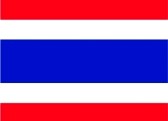All Categories
*Price and Stocks may change without prior notice
*Packaging of actual item may differ from photo shown
- Electrical items MAY be 110 volts.
- 7 Day Return Policy
- All products are genuine and original








About Lacrosse: A History Of The Game
Product Description North America's Indian peoples have always viewed competitive sport as something more than a pastime. The northeastern Indians' ball-and-stick game that would become lacrosse served both symbolic and practical functions―preparing young men for war, providing an arena for tribes to strengthen alliances or settle disputes, and reinforcing religious beliefs and cultural cohesion. Today a multimillion-dollar industry, lacrosse is played by colleges and high schools, amateur clubs, and two professional leagues. In Lacrosse: A History of the Game, Donald M. Fisher traces the evolution of the sport from the pre-colonial era to the founding in 2001 of a professional outdoor league―Major League Lacrosse―told through the stories of the people behind each step in lacrosse's development: Canadian dentist George Beers, the father of the modern game; Rosabelle Sinclair, who played a large role in the 1950s reinforcing the feminine qualities of the women's game; "Father Bill" Schmeisser, the Johns Hopkins University coach who worked tirelessly to popularize lacrosse in Baltimore; Syracuse coach Laurie Cox, who was to lacrosse what Yale's Walter Camp was to football; 1960s Indian star Gaylord Powless, who endured racist taunts both on and off the field; Oren Lyons and Wes Patterson, who founded the inter-reservation Iroquois Nationals in 1983; and Gary and Paul Gait, the Canadian twins who were All-Americans at Syracuse University and have dominated the sport for the past decade. Throughout, Fisher focuses on lacrosse as contested ground. Competing cultural interests, he explains, have clashed since English settlers in mid-nineteenth-century Canada first appropriated and transformed the "primitive" Mohawk game of tewaarathon, eventually turning it into a respectable "gentleman's" sport. Drawing on extensive primary research, he shows how amateurs and professionals, elite collegians and working-class athletes, field- and box-lacrosse players, Canadians and Americans, men and women, and Indians and whites have assigned multiple and often conflicting meanings to North America's first―and fastest growing―team sport. From Library Journal Highlighting cultural and social developments, this volume offers a sweeping history of the game. Fisher (history, Niagara Cty. Community Coll.) traces the emergence of modern lacrosse in both Canada and the United States, pointing out that the sport's early Mohawk roots precluded early mass popularity. However, its appeal during the close of the 19th century, at institutions like Johns Hopkins University, enabled lacrosse to strike a chord with elite young men. Then, in the first half of the ensuing century, the American version of the game spread throughout the Northeast. Through the 1960s, lacrosse's devotees still lauded its amateurism while contending that the players harkened back to "noble savages." By the 1970s, the "old Indian game" became part of popular culture in America and elsewhere, and organizers increasingly argued that lacrosse required greater professionalization and financial support. The proliferation of "middle-class lacrosse" threatened "the elite aura" that had long characterized the sport. Fisher presents his story competently, if methodically. Another history might have dwelled more on tales about the sport's brightest stars, including the legendary Jim Brown. Still, this is a useful volume about a sport that has not received much coverage. Recommended for public libraries. R.C. Cottrell, California State Univ., Chico Copyright 2002 Cahners Business Information, Inc. Review A sweeping history of the game. Fisher traces the emergence of modern lacrosse in both Canada and the United States. ( Library Journal) A thoroughly researched, clearly written, handsomely designed, very comprehensive history of North American lacrosse since the mid-nineteenth century... this is one of the most informative histories of any sport that I have ever read. (Morris Mott The Be




 (3)
(3)






















